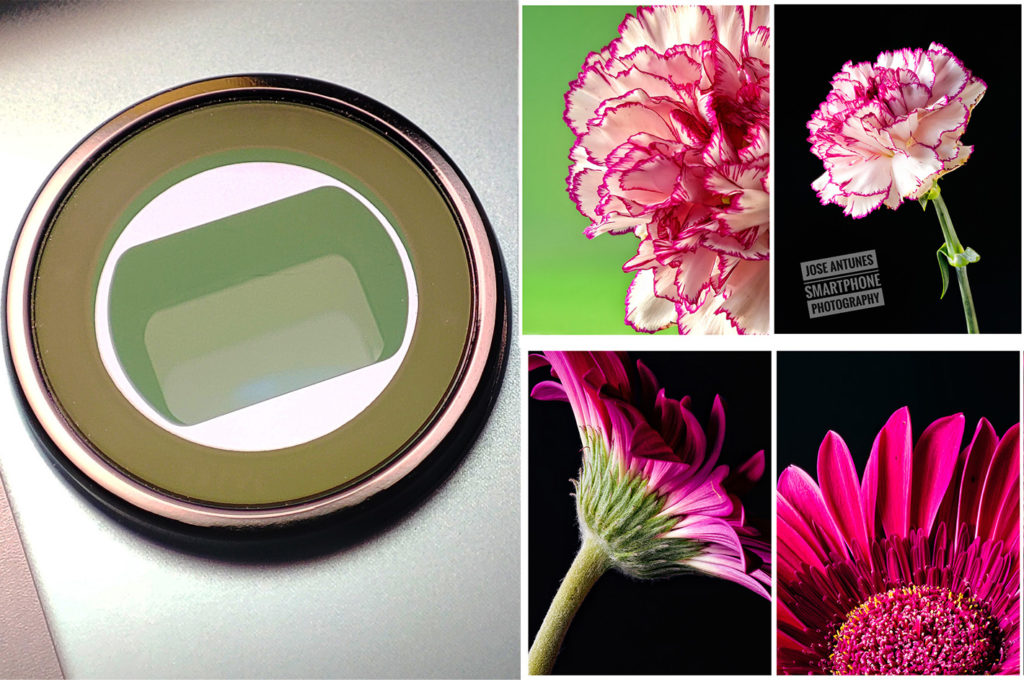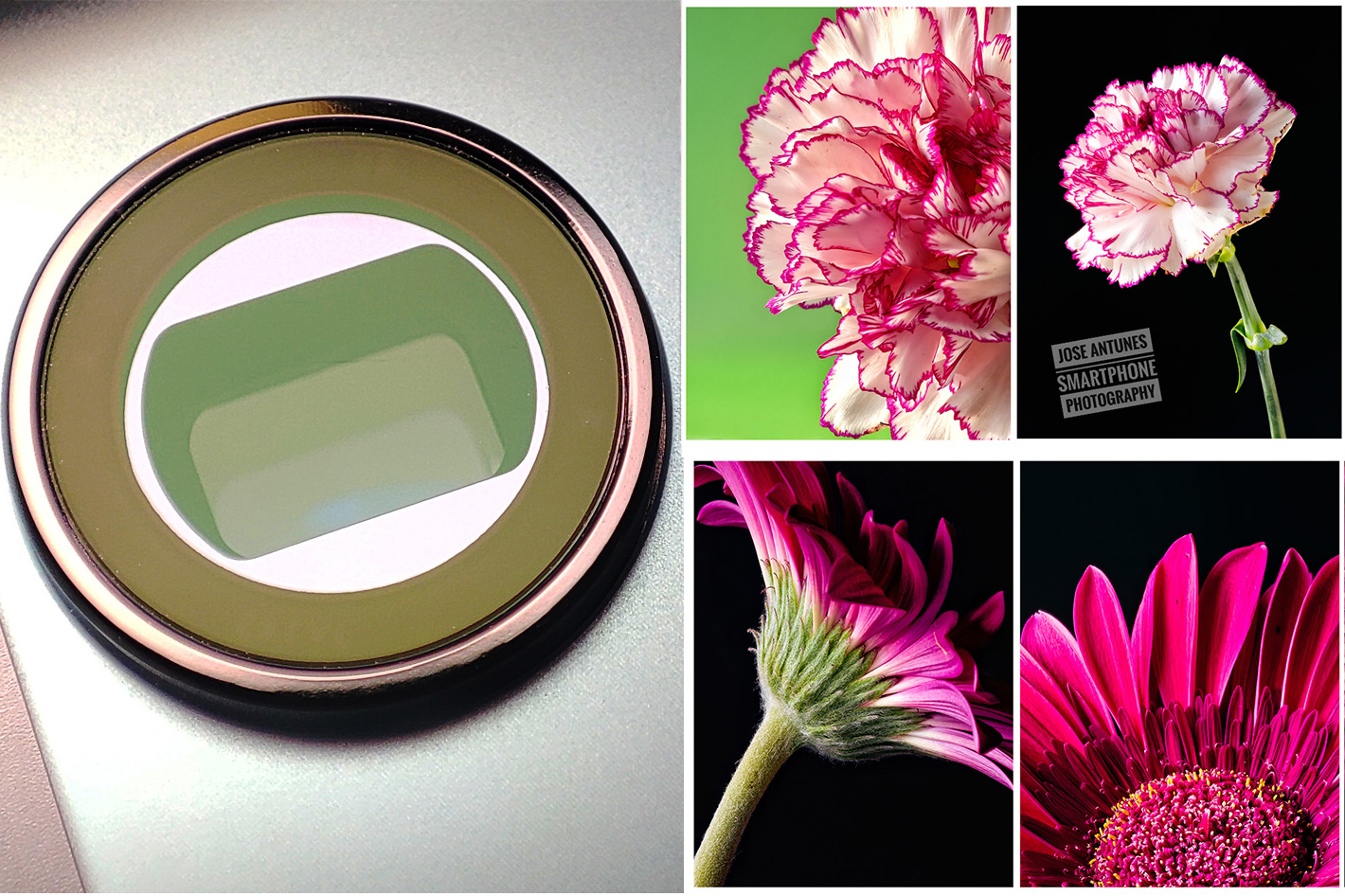 One piece of data usually missing from smartphone specifications is essential for photographers: the minimum focus distance. I asked smartphone companies the question and none has replied.
One piece of data usually missing from smartphone specifications is essential for photographers: the minimum focus distance. I asked smartphone companies the question and none has replied.
Do you know how close your smartphone’s lenses focus? I know, because I used a measuring tape to measure the distance and understand what I can and cannot do with different lenses. But this information that photographers and videographers take for granted with conventional lenses, is completely ignored by cell phone manufacturers. Only one value is usually mentioned: that of the macro lens, if available, and especially in cases where AF is present, since many macro solutions in smartphones use fixed-focus lenses.
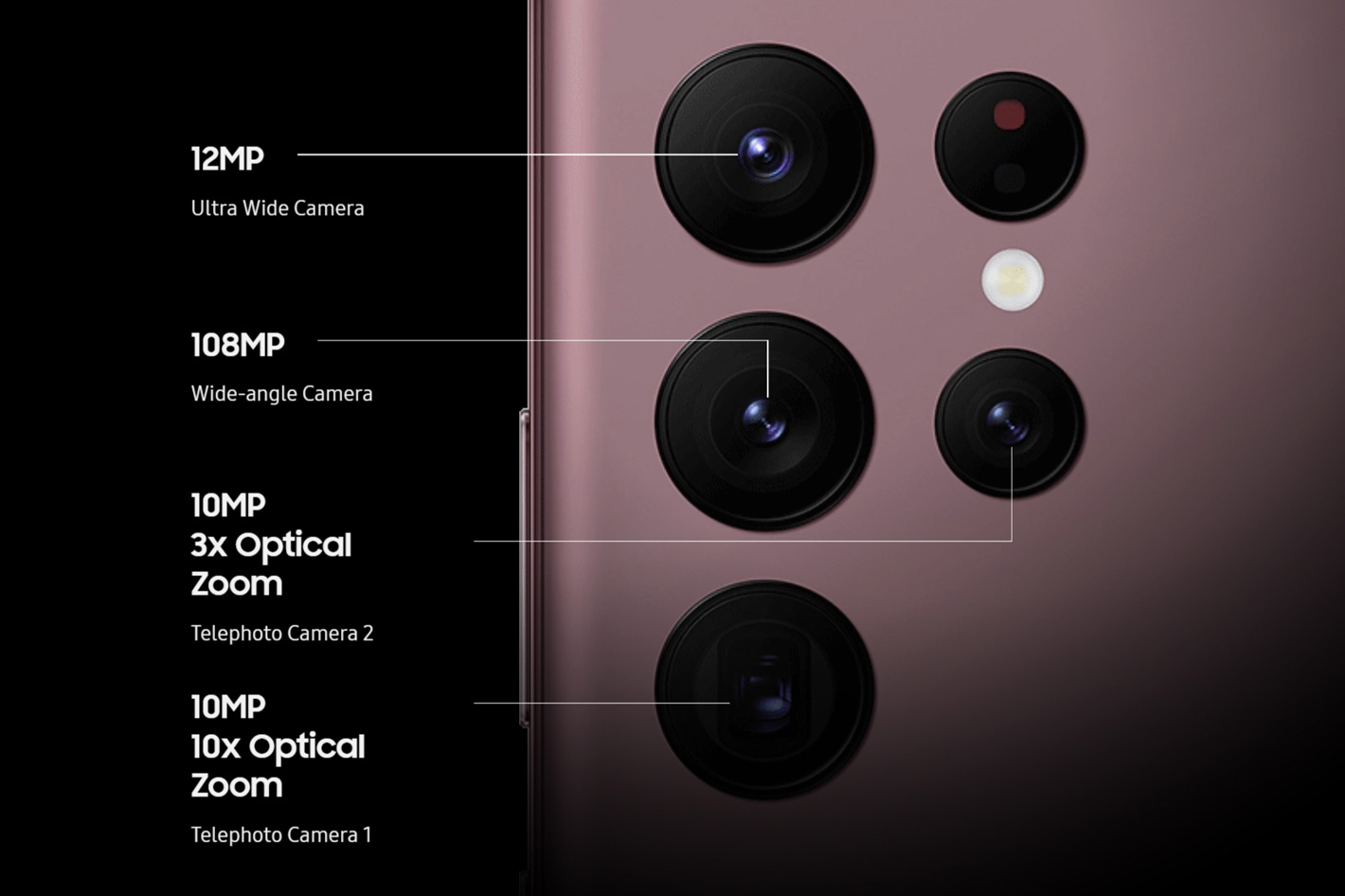 Knowing the shortest focusing distance of a conventional lens is essential from the very beginning of photography, because it allows you to define how you frame subjects and play with depth of field. On a cell phone camera, where the depth of field cannot be controlled through the aperture, it becomes even more important to know how close the subject can be, to play with the different planes in the image. This knowledge is crucial to advance from the simple snapshot to more complex creations in terms of framing.
Knowing the shortest focusing distance of a conventional lens is essential from the very beginning of photography, because it allows you to define how you frame subjects and play with depth of field. On a cell phone camera, where the depth of field cannot be controlled through the aperture, it becomes even more important to know how close the subject can be, to play with the different planes in the image. This knowledge is crucial to advance from the simple snapshot to more complex creations in terms of framing.
In my case this information is even more important because, for years, for pleasure and professionally, I have photographed flowers with long focal lengths, exploiting to the maximum the ability of some lenses to focus on close distances. When people look at my flower photography they automatically say “macro” and ask me which macro lens I used… and I’ve to explain them that a 640mm focal length is used instead of a “normal” 100mm macro. In fact, the longest focal length of a Canon 100-400mm zoom paired with a DSLR with an APS-C sensor.
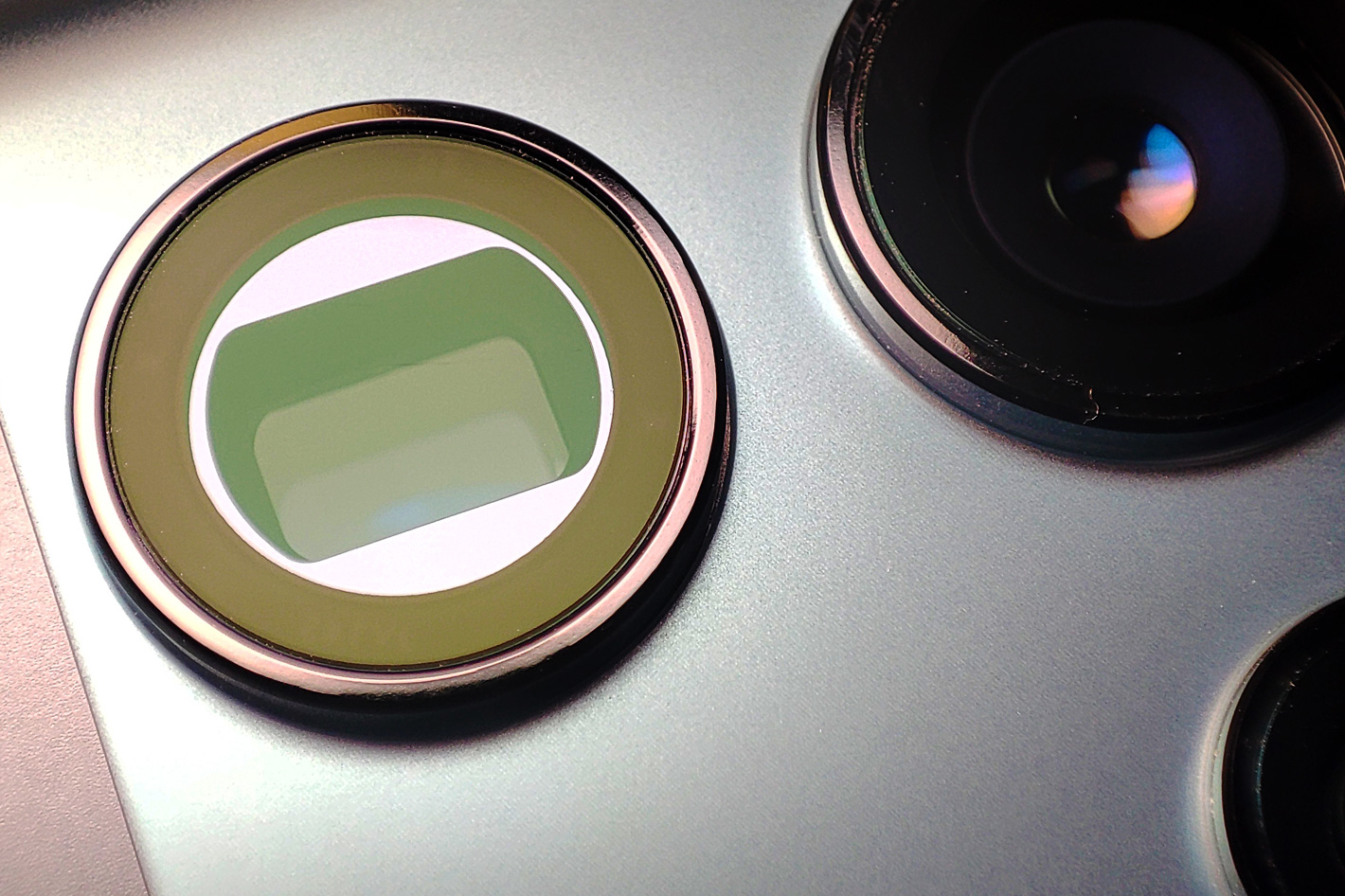 A 230mm telephoto on the Galaxy S22 Ultra
A 230mm telephoto on the Galaxy S22 Ultra
The first series of the L series Canon 100-400mm lens focused at 1.80 meters, already offering a workable focusing distance for flowers, but the second series has reduced that distance to 90cm, which translates into an image magnification that makes the use of a true macro practically dispensable for the generality of the flower photography I do. Information about the shortest focusing distance of any lens is, for me – and I guess for anyone using a camera -, a valuable piece of information that contributes to better photos or videos.
I was therefore surprised to find that this information does not appear in smartphone specifications. I only found accurate information about focus distances on external lenses for smartphones from the Moment and ShiftCam brands, suggesting those companies understand the need of photographers better than smartphone manufacturers. I browsed through data from tens of smartphones and there isn’t even a hint of data about the MFD (Minimal Focusing Distance) achieved by the lenses used.
Smartphones have reached a point, in terms of technology, that makes it possible to think about using them as a replacement for conventional cameras, for some situations. With flower photography as a key interest, I decided to explore the potential of modern models and started to investigate the solutions available from distinct brands regarding focal lengths. A zoom similar to what I use in conventional photography does not exist, although a brand like Oppo has promised to develop an optical 80-200mm zoom for a smartphone a couple of years ago. What does exist now, in the real-world, are smartphones with different telephotos, covering values that reach, in the case of the Samsung Galaxy S22 Ultra, a maximum of 230mm. This value corresponds to a true optical system and not the “digital zooms” served by some brands, including Samsung and its 100x zoom (Space Zoom, they call it…) which is something that any serious photographer will leave aside.
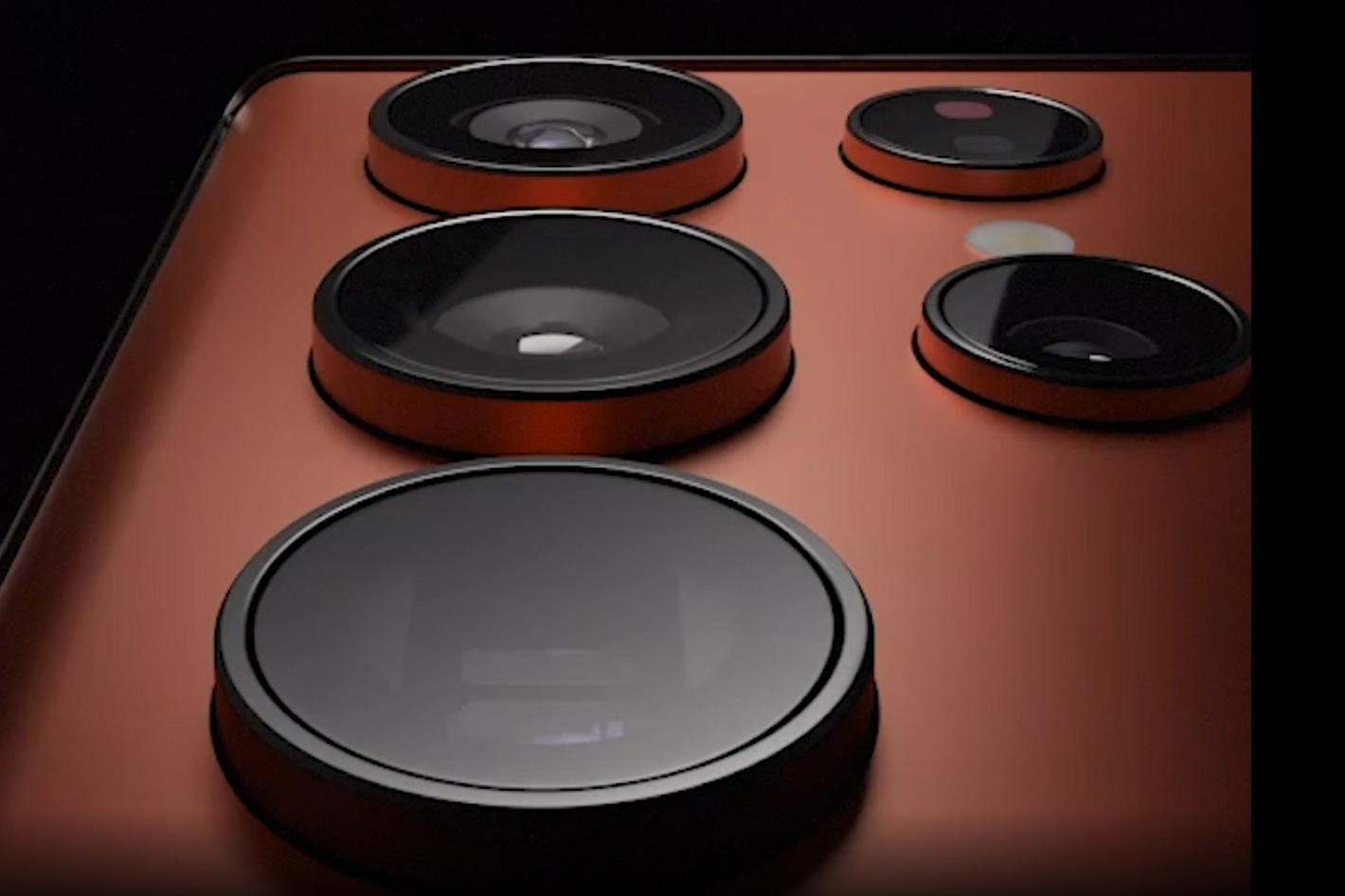 Apple, Xiaomi, Huawei, Oppo and Samsung never replied
Apple, Xiaomi, Huawei, Oppo and Samsung never replied
Interested in using a smartphone to photograph flowers the same way I photograph them with a DSLR, my first obstacle was the lack of information about the capabilities of the different telephotos used in smartphones. The generality of the telephotos present in smartphones are humble, 2x, with some going beyond 3.5x, like the new Honor Magic4 Pro (about 90mm).
In fact, as I’ve written before, telephoto photography remains an area where smartphone brands rarely offer more than the average 2x optical “zoom,” a trend that suggests they’re not really catering for the interest of photographers who may only consider smartphones as a tool when the available focal range goes from wide-angle to at least an average telephoto of around 200mm. Oppo‘s recent release of its Find X5 Pro, with a humble 13MP 52mm telephoto lens confirms that there is a gap between what is being said and what actually happens.
Faced with a lack of information about the focusing characteristics of the telephotos present in models from distinct brands, I decided to contact them, requesting more details. Apple, Xiaomi, Huawei, Oppo and other manufacturers were included in my list, without any success. None of these brands deigned to reply, suggesting that they either don’t know, or don’t want to know… Only one replied: Samsung, indicating that they would pass the question to the department responsible, and that they would contact me. That was in the middle of February, and I still haven’t heard from them.
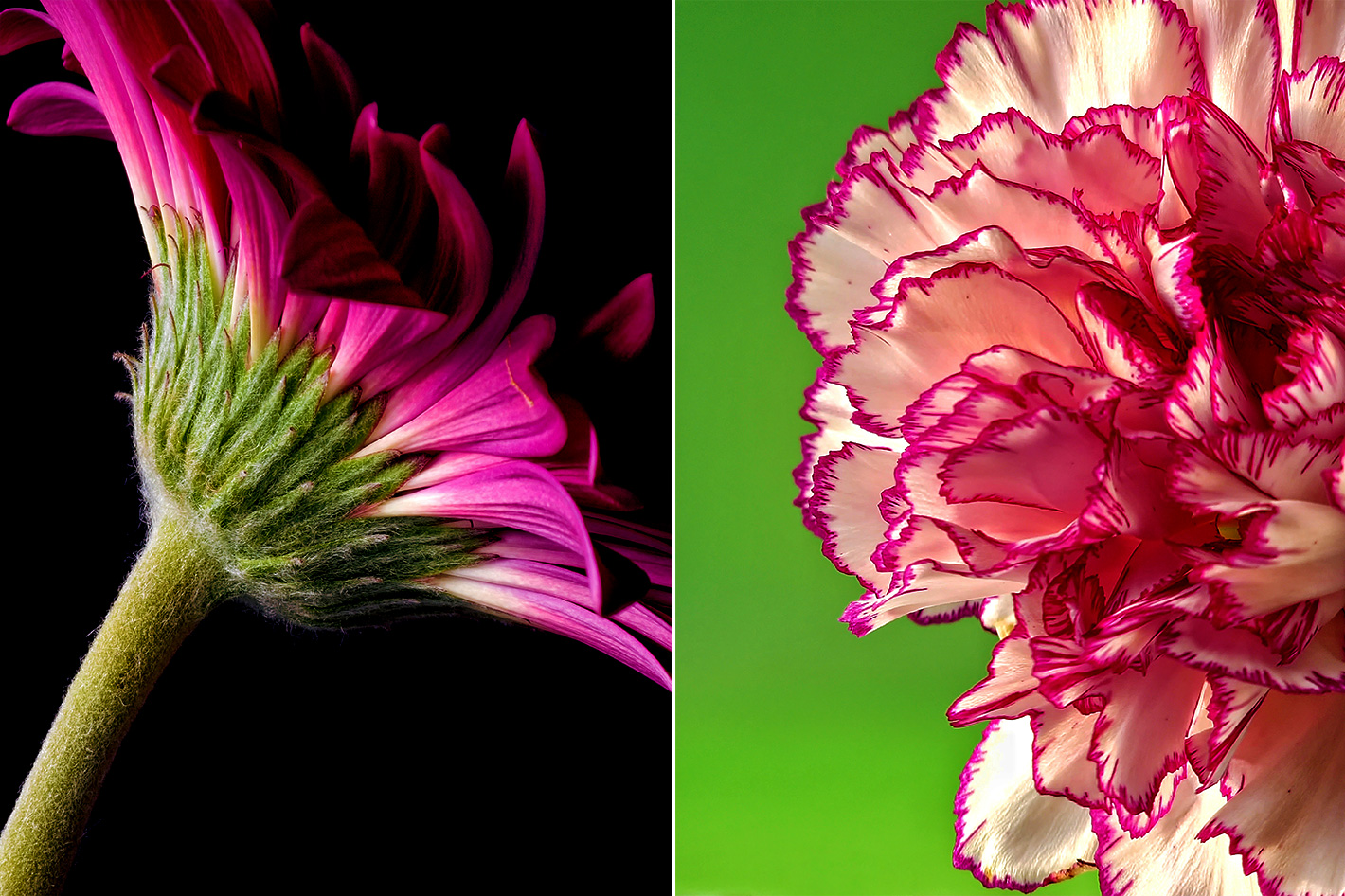 First positive remarks came from a friend
First positive remarks came from a friend
Samsung’s new model, Galaxy S22 Ultra, with two optical telephotos, 3x and 10x, respectively 70 and 230mm, stood out among all as the one potentially most capable of being a solution usable to photograph flowers. I visited two demonstration rooms as soon as the smartphone became available, so that I could test, despite the limited possibilities in any of them, the optical systems, with a view to a purchase. On both occasions I asked if someone could give me information about focusing distances, but nobody knew the answer or had ever thought of such a thing! It’s amazing!
A photographer friend who was looking to replace her smartphone, the Samsung S10+, decided to buy the Samsung Galaxy 22 Ultra at my suggestion, and she provided me some of the initial information about the device. Immediately after receiving it she used the smartphone for a photographic project she has been shooting with a digital camera – sundials – and expressed satisfaction with the results obtained.
Sundials are placed atop church towers or buildings, so this made it clear that the 230mm telephoto of the S22 Ultra is enough to bring distant subjects close. But I was mostly interested into how close it could focus, and my friend also photographed some flowers, suggesting me that, based on her experience, the telephoto would probably work.
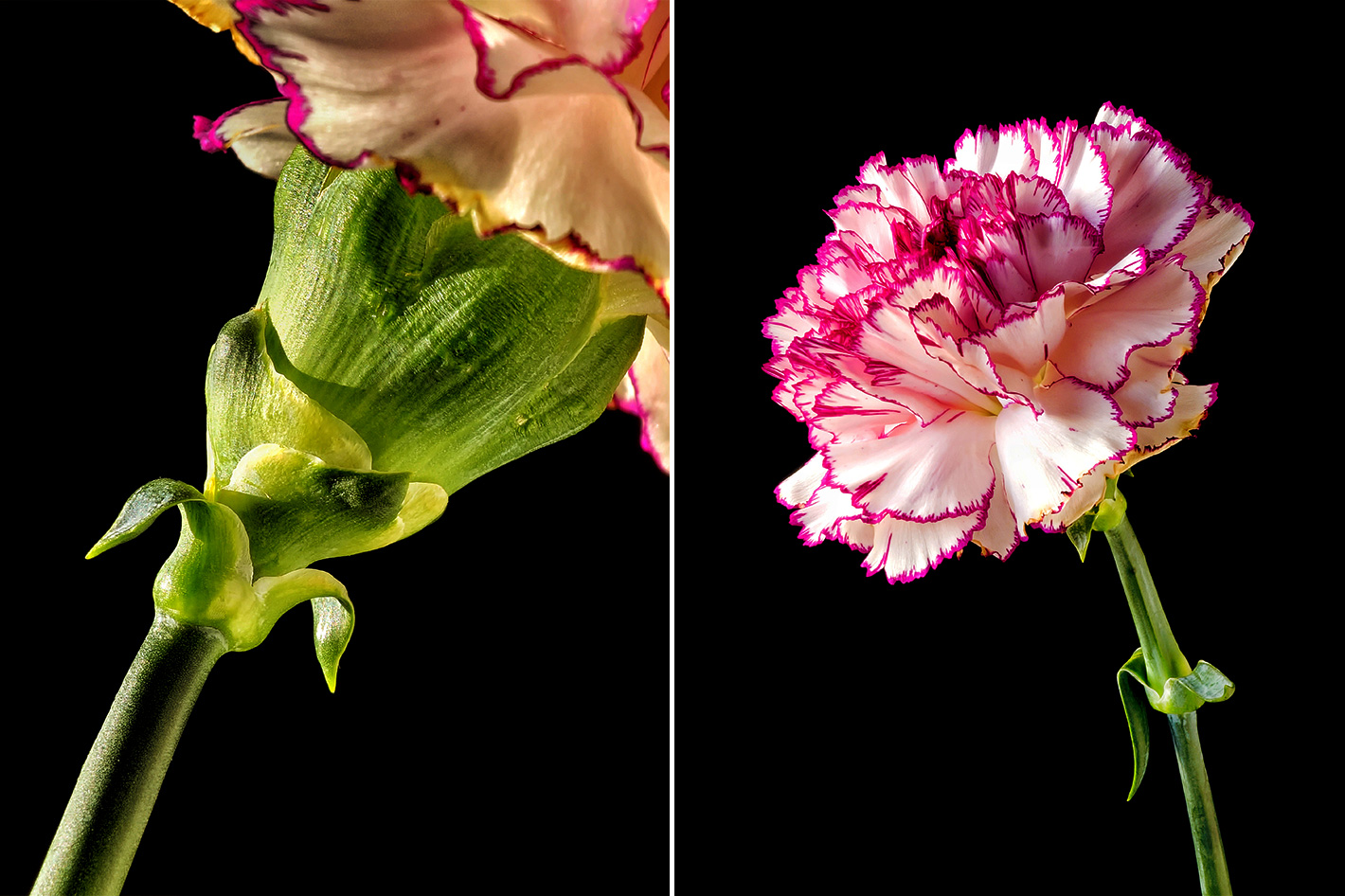 Shooting in the studio
Shooting in the studio
Encouraged by my trials at the smartphone demonstration halls and the information from my friend I decided to purchase the S22 Ultra. The first two days after receiving the equipment I shot flowers in the studio, to measure, in a controlled environment, the closest distances at which the two lenses – 3x and 10x – focus. Now, before I go ahead and reveal my findings, it’s important to explain something that one only discovers when testing different camera apps at the same time: the close focusing distance may vary, for the same lens, depending on the app or app mode you use. Although differences may not be huge, they are present and are something to consider, because they will have impact on the results.
The Samsung Galaxy S22 Ultra has the usual Camera app, which offers two modes: a regular Photo for everyone, which is mostly automatic and uses AI intensively, and the Pro mode, which allows you to control parameters as WB, focus, ISO and exposure time through shutter speed. For those who want the ultimate in terms of their photography, Samsung released recently its Expert RAW app, which is the ideal solution if you want absolute control over your RAW files.
If you use the Camera app, you’ll discover that the Pro mode will also offer, besides more control, the option to save images in both RAW and JPEG simultaneously, while some of the “intelligent features” available with the Photo mode are not accessible… which is a good thing to know. Now, one thing to remember is that when you shoot with the ultra-wide and the wide lens/camera pair both RAW and JPEG have similar size: 3000×4000 pixels. When you use the 3x tele and 10x tele the JPEG is 3000×4000, for a 12MP file and the RAW (which is a DNG) is 2736×3648 pixels, which corresponds to the 10MP sensor size.
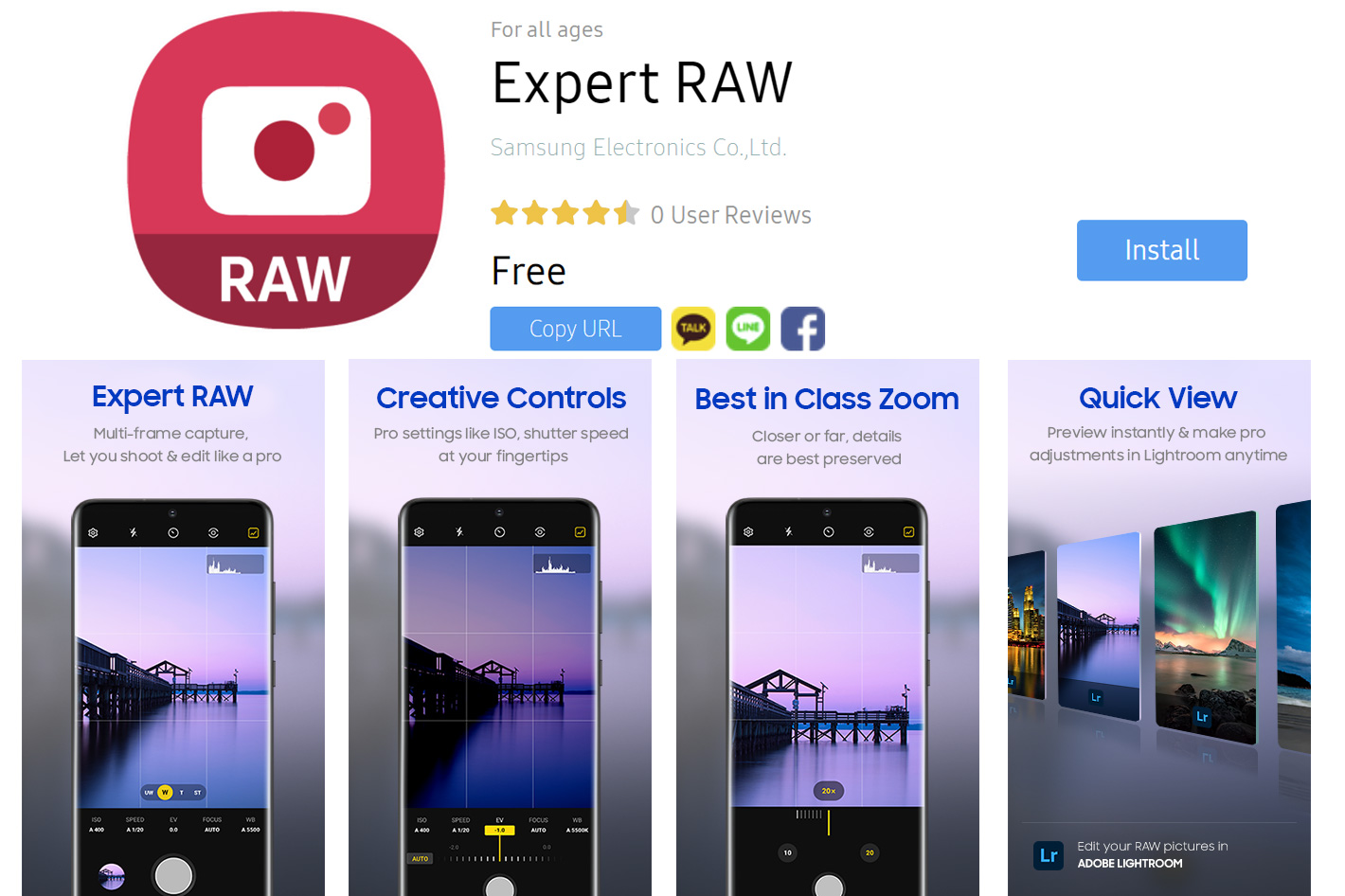 The Expert RAW app may be your best bet
The Expert RAW app may be your best bet
The Expert RAW app, which is only available from Samsung’s store, promises extended control over images, with a 16-bit RAW capture, and the first thing you’ll notice is that it shoots both JPEG and RAW at the same size (3000×4000 pixels) at all focal lengths, meaning it oversamples the files from both telephotos. While I like the Expert RAW app, I am still not confident of its results in terms of exposure, which seems to fail when light levels are low, but this is something to explore further and return to later. With Samsung being known for updating and adjusting the software for its smartphones during the months after release, the Expert RAW seems to be a good start to make the S22 Ultra even more important as a tool for serious photography and video.
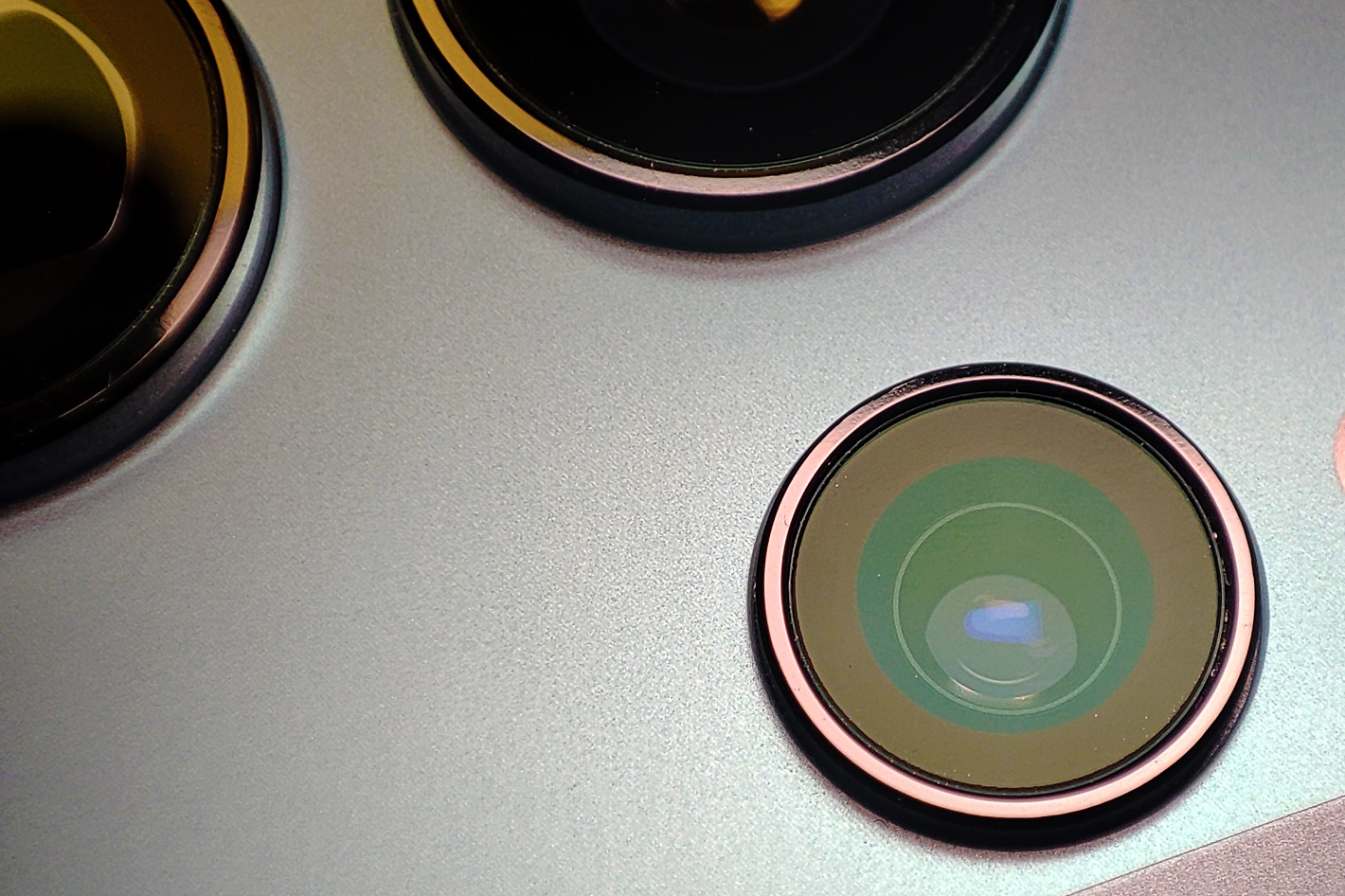
So, after this long note on the way the camera apps work, let’s go back to the telephotos in the Galaxy S22 Ultra, how they work and how they can be used for my flower photography and photography in general. The values I indicate here are approximate but should give you a better notion of what each lens is capable of. Although my specific reason is flower photography, the information about MFD is also useful if you need to photograph other subjects where working at close range is essential.
This is not intended to be a lab test, as I just measured the distance from camera to subject with a measure tape, and then compared results with those obtainable with normal lenses. The information makes it easier to take decisions about the Samsung Galaxy S22 Ultra and if it is the tool you need. I just hope smartphone companies take note of this effort and start publishing complete information about the lenses used that is REALLY important for photographers and videographers. So, without further ado, let’s crunch the numbers…
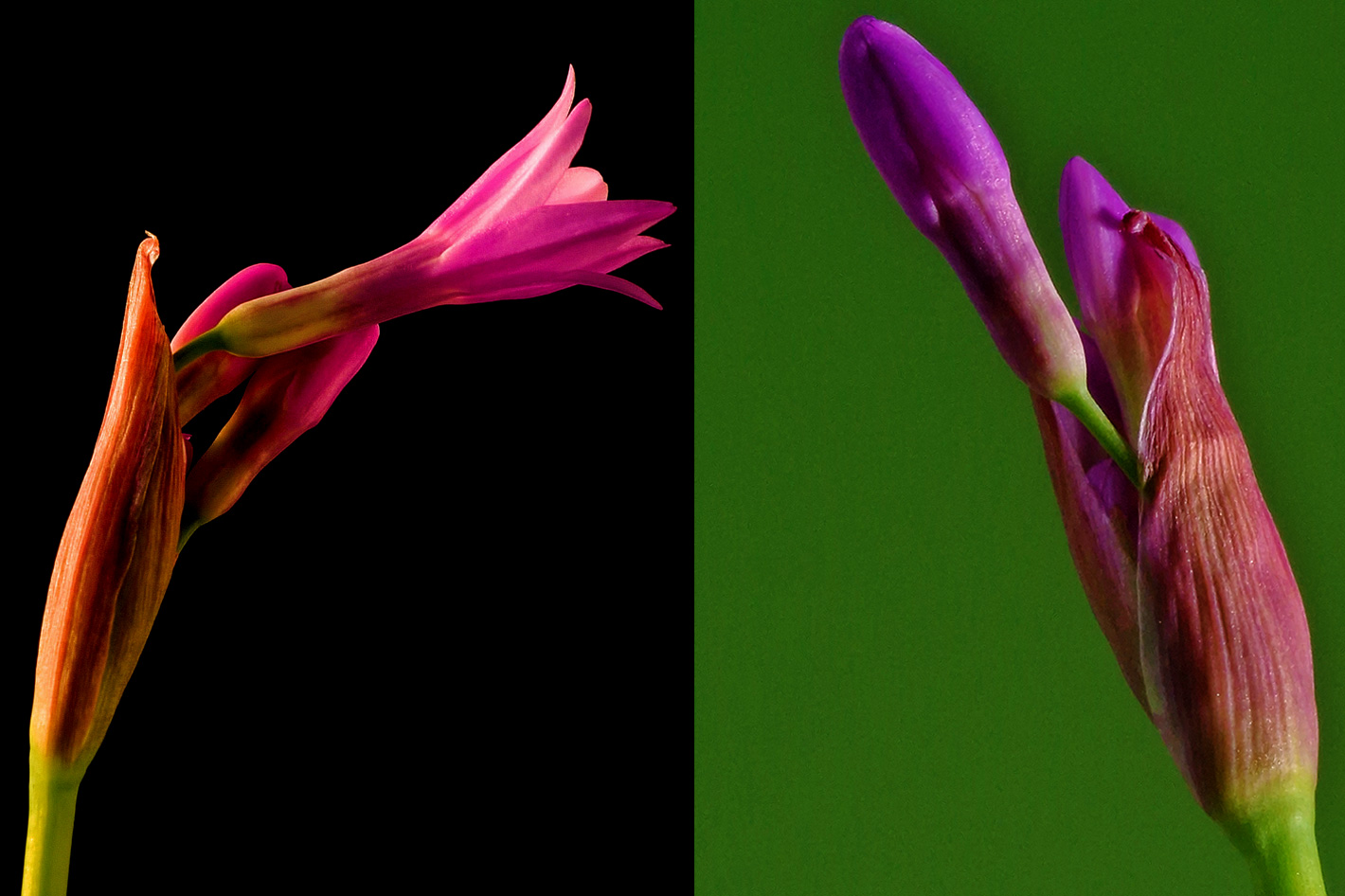 Shooting flowers with a Samsung S22 Ultra
Shooting flowers with a Samsung S22 Ultra
The 3x telephoto (70mm f/2.4) focuses at +/- 220mm, which is good. For comparison, the Canon RF 24-70mm f/2.8L lens has as its minimum focus distance (MFD) 210mm, while the Canon EF 24-70mm f/2.8L II USM has a MFD of 380mm. This means that the 3x telephoto of the S22 Ultra has a reasonable magnification capability that makes it usable at short distances. It is also a good option for portrait, if you need it.
The 10x telephoto proved to be surprising. With it you can practically fill the vertical frame with a flower – red gerbera daisy – with a diameter of 10cm and its stem, from 1150mm. The shortest focusing distance is +/- 450mm, at which point you fill the entire frame, vertical or horizontal, with an extreme close-up of a medium-sized flower, such as a carnation.
As a reference, the Canon EF 100-400mm f/4.5-5.6L IS II USM, which I know so well, has a minimum focus distance of 980mm at 400mm, and a magnification of 0.31x, making it an excellent lens in terms of close ups. Another popular Canon lens, the EF 70-200mm f/2.8 L IS II USM, for example, has 1200mm as its minimum focus distance. The 10x telephoto – 230mm f/4.9 – of the S22 Ultra is, therefore, a good option that I can use for flower photography.
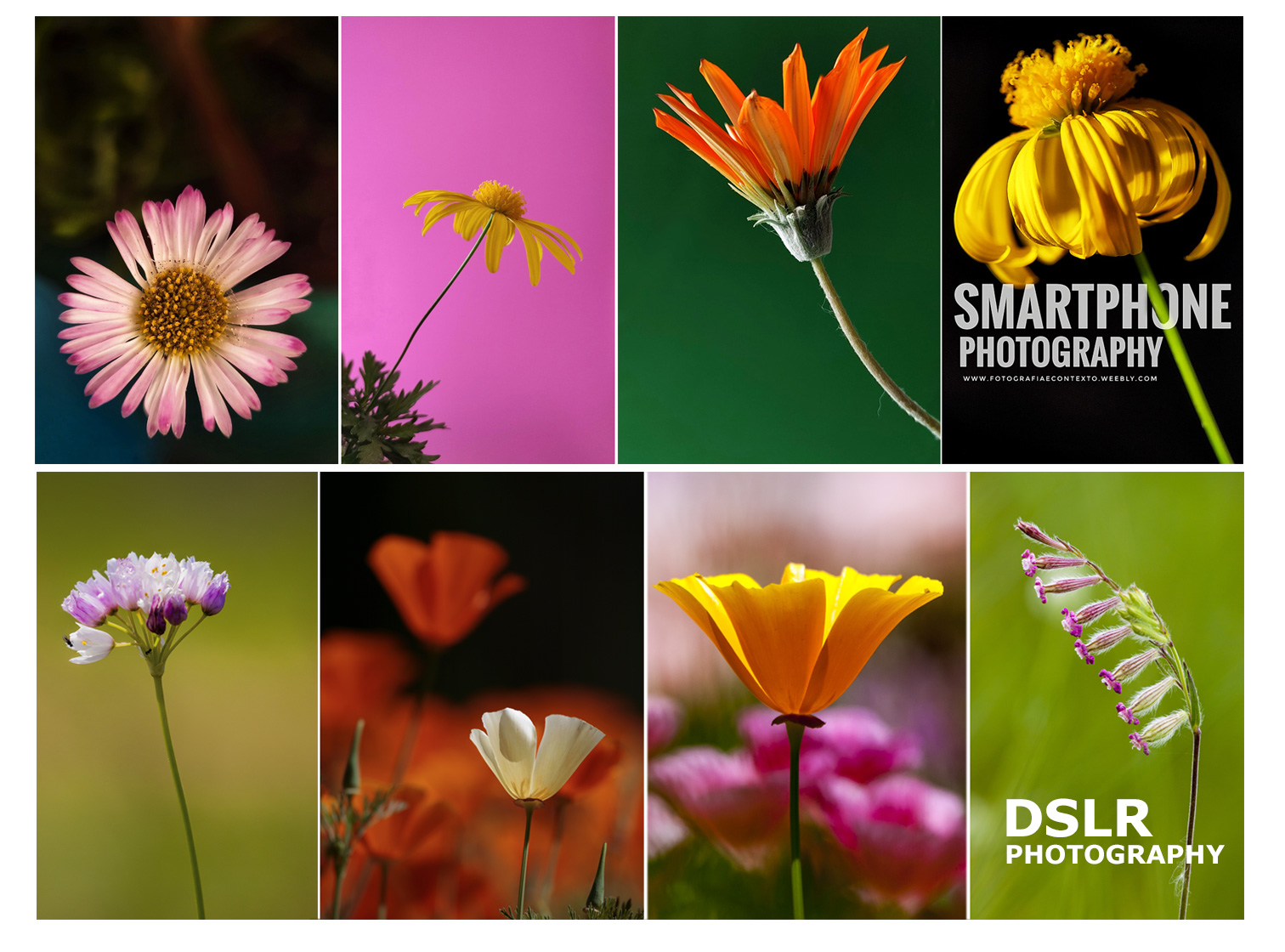 Quality may be different, but the emotion is the same
Quality may be different, but the emotion is the same
I am, it is true, far from the 640mm telephoto lens that results from using an APS-C format camera, but the fact that I am using a 230mm that focuses at just under half the distance – 450mm versus 980mm – means that the results obtained with the S22 Ultra are in the same category, not least because, for framing reasons, I don’t always use the longest focal length of the Canon lens.
The best example that it is feasible to use a smartphone to obtain results that are close to those produced with a DSLR are the flower photos placed side by side… or in rows, as shown here. The examples show in the collage above were taken with a Xiaomi Redmi Note 10 Pro, which does not have a telephoto but still manages to offer good results. With the Galaxy S22 Ultra I can do much more, as the other photos published with this article show.
Clearly, when enlarging the photo, there is a difference, in terms of quality, between what an APS-C sensor and a 1570-gram lens can do and a smartphone, but for the purpose I need, the photos created with the S22 Ultra are more than sufficient. And it means I can travel lighter, something which is an important aspect to consider.
This little experiment revealed a lot about smartphones and how the industry has evolved, but it would have been easier, for us all, if smartphone manufacturers indicated, in the specifications of their models, detailed information about the characteristics of the focusing systems, something that is always available for conventional lenses. After all, aren’t cell phone manufacturers the ones who say they want to meet the needs of photographers and videographers?

Filmtools
Filmmakers go-to destination for pre-production, production & post production equipment!
Shop Now